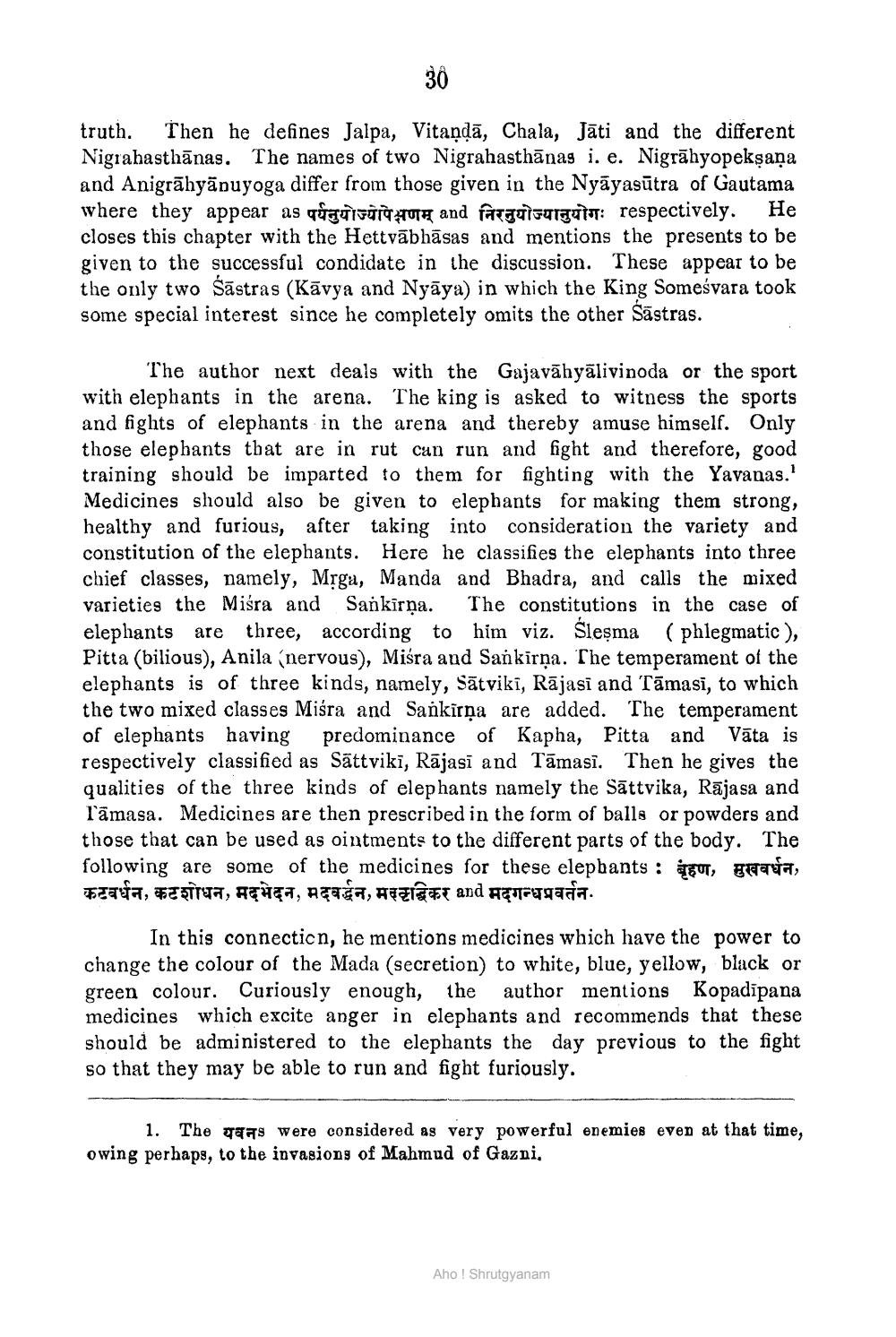________________
truth. Then he defines Jalpa, Vitandā, Chala, Jāti and the different Nigrahasthānas. The names of two Nigrahasthānas i. e. Nigrāhyopeksana and Anigrāhyānuyoga differ from those given in the Nyāyasūtra of Gautama where they appear as CTILOITATUĦ and ATTĪSODUIT: respectively. He closes this chapter with the Hettvābhāsas and mentions the presents to be given to the successful condidate in the discussion. These appear to be the only two Šāstras (Kavya and Nyāya) in which the King Someśvara took some special interest since he completely omits the other Sāstras.
The author next deals with the Gajavahyālivinoda or the sport with elephants in the arena. The king is asked to witness the sports and fights of elephants in the arena and thereby amuse himself. Only those elephants that are in rut can run and fight and therefore, good training should be imparted to them for fighting with the Yavanas.' Medicines should also be given to elephants for making them strong, healthy and furious, after taking into consideration the variety and constitution of the elephants. Here he classifies the elephants into three chief classes, namely, Mrga, Manda and Bhadra, and calls the mixed varieties the Miśra and Sankīrṇa. The constitutions in the case of elephants are three, according to him viz. Sleşma (phlegmatic), Pitta (bilious), Anila (nervous), Mišra and Sankirņa. The temperament of the elephants is of three kinds, namely, Sātviki, Rājasi and Tāmasi, to which the two mixed classes Miśra and Sankirņa are added. The temperament of elephants having predominance of Kapha, Pitta and Vāta is respectively classified as Sättviki, Rājasi and Tāmasī. Then he gives the qualities of the three kinds of elephants namely the Sättvika, Rājasa and Tāmasa. Medicines are then prescribed in the form of balls or powders and those that can be used as ointments to the different parts of the body. The following are some of the medicines for these elephants: बृहण, मुखवर्धन, कटवर्धन, कटशोधन, मदभेदन, मदवर्द्धन, मद्धिकर and मदगन्धप्रवर्तन.
In this connecticn, he mentions medicines which have the power to change the colour of the Mada (secretion to white, blue, yellow, black or green colour. Curiously enough, the author mentions Kopadīpana medicines which excite anger in elephants and recommends that these should be administered to the elephants the day previous to the fight so that they may be able to run and fight furiously.
1. The taas were considered as very powerful enemies even at that time, owing perhaps, to the invasion of Mahmud of Gazni,
Aho ! Shrutgyanam




